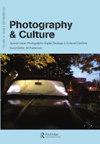Negative/Positive: A History of Photography
IF 0.3
4区 艺术学
0 ART
引用次数: 2
Abstract
As recounted by Batchen, in a paper on photographic chemistry published in the proceedings of the Royal Society of London on 20 February 1840, John Herschel attempted to ‘avoid much circumlocution’ in the description of photography by introducing ‘the terms positive and negative, to express respectively, pictures in which lights and shades are as in nature, or as in the original model, and in which they are the opposite, i.e. light representing shade, and shade light’ (17). The terminology contained an implicit hierarchy that has continued to haunt discussions about the medium. Negatives are seldom written about in detail by historians and are illustrated only rarely within the historiography of photography, a literature which reflexively prioritises the representational clarity of the positive print. Batchen’s latest book brings the negative into the frame and asks what shadow it might cast upon conventional narratives of the photographic image. Negative/Positive: A History of Photography opens with a brief analysis of Lennart Nilsson’s 1948 photograph for Lifemagazine showing a fellow photographer, Mayola Amici, at work in the darkroom of his studio in Stanleyville (Kisangani), part of what was then the Belgian colony of Congo. The Congolese photographer gazes intently at his wristwatch while a negative – a portrait – develops in his other hand. Dramatising the time of photographic production, the scene constitutes what W. J. T. Mitchell might term a ‘metapicture’, prompting viewers to reflect on the nature of images and image-making (Mitchell 2013). For Batchen, it exposes numerous aspects of photography that are too often obscured: the materiality and temporality of darkroom practices; the authorial interventions that are necessary to produce photographs; and the visual politics of the negative/positive process, historically conceived in terms of a racialised metaphysics of darkness and light (‘fair women are transformed into negresses’, as Herschel put it) (7). The rest of the book – a well-illustrated publication with 94 colour figures– is an attempt to illuminate this ‘repressed, dark side’ (3) of photographic history. There have recently been some scattered engagements in scholarship with the politics and aesthetics of the negative, in particular with regard to photography and race (Grigsby 2011; Campt 2012, 117–底片/底片:摄影史
正如Batchen所述,在1840年2月20日发表在《伦敦皇家学会会刊》上的一篇关于摄影化学的论文中,约翰·赫歇尔试图在描述摄影时“避免太多的拐弯抹角”,他引入了“积极和消极两个术语,分别表达了光线和阴影与自然界或原始模型一样的画面,并且其中它们是相反的,即表示阴影的光和阴影光’(17)。该术语包含一种隐含的层次结构,这种层次结构一直困扰着关于媒体的讨论。历史学家很少详细描述否定,在摄影史学中也很少说明,摄影史学是一种反射性地优先考虑正面印刷品的代表性清晰度的文学。Batchen的最新著作将底片带入画面,并询问它可能会给传统的摄影图像叙事蒙上什么阴影。《消极/积极:摄影史》开篇简要分析了伦纳特·尼尔森1948年为《生活》杂志拍摄的一张照片,照片中的摄影师同伴马约拉·阿米奇在斯坦利维尔(基桑加尼)工作室的暗室里工作,斯坦利维尔当时是比利时殖民地刚果的一部分。这位刚果摄影师聚精会神地盯着他的手表,而他的另一只手正在冲洗底片——一幅肖像。该场景戏剧性地缩短了摄影制作的时间,构成了W·J·T·米切尔所说的“元画面”,促使观众反思图像和图像制作的本质(米切尔,2013年)。对巴肯来说,它暴露了摄影的许多经常被掩盖的方面:暗室实践的物质性和时间性;制作照片所必需的作者干预;以及消极/积极过程的视觉政治,历史上是根据黑暗和光明的种族化形而上学来构思的(正如赫歇尔所说,“女性转变为黑人”)(7)。这本书的其余部分——一本插图精美的出版物,有94个彩色人物——试图阐明摄影史上“压抑、黑暗的一面”。最近,学术界对负面的政治和美学进行了一些零散的研究,特别是在摄影和种族方面(Grigsby 2011;Campt 2012117-
本文章由计算机程序翻译,如有差异,请以英文原文为准。
求助全文
约1分钟内获得全文
求助全文

 求助内容:
求助内容: 应助结果提醒方式:
应助结果提醒方式:


